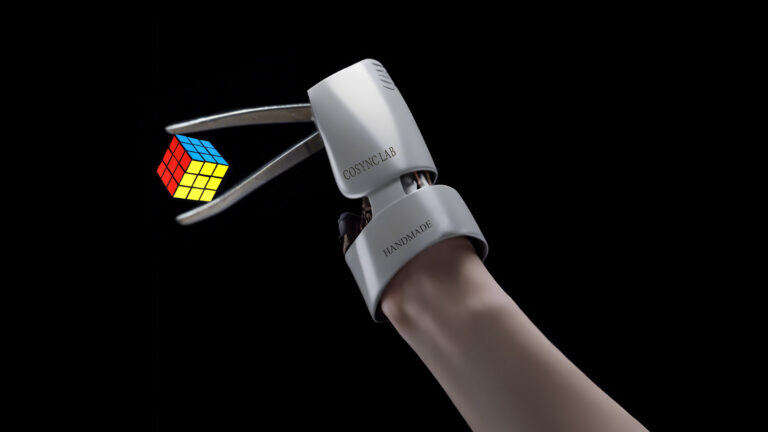disability
Prosthetic users liked tweezers, wrenches as much as "natural" hands in a new study

Courtesy Ottavia Maddaluno
"Embodiment" is the ultimate goal for people who build prosthetic limbs. It's the feeling somebody gets when they have agency or ownership over a body part. For prosthetic users, it means more muscle control, improved sensory feedback, and less limb pain. But it's an elusive target — nearly half of people with upper limb prosthetics actually end up abandoning them.
In a recent study, researchers took an unconventional approach to seek embodiment for users. Using virtual reality, participants tried out bionic tools like tweezers or wrenches instead of more "natural" hand prosthetics. And it worked: Participants felt as or even more embodied with these tools than with the "natural" option. The idea of "tool-mediated embodiment" isn't completely new to people with disabilities, STAT's Timmy Broderick reports, but it could expand the possibilities for prosthetics. Read more.
cancer
Are Gen Xers getting cancer more than previous generations?
Yes. That's according to a new study published yesterday in JAMA Network Open, in which researchers analyzed a cohort of 3.8 million cancer patients. Members of the lost generation born between 1965 and 1980 have experienced larger per-capita increases in rates of the leading cancers than any generation since 1908. Rates of thyroid, kidney, rectal, uterine, colon, pancreatic cancers and more have increased significantly between the Baby Boomer generation and Gen X, the study found.
The researchers were surprised by their own findings, they wrote. Science has identified preventable causes and screenings have become more standardized. But while some cancers, like those of the lung and cervix, have fallen, it's not enough to offset the rising rates of other cancers. If the trend continues among Millenials, the authors worry that cancer rates in the U.S. could "remain unacceptably high for decades to come," they wrote. To keep up on the latest news, read STAT's cancer coverage.
first opinion
A scientist calls for empathy regarding vaccine injuries
Kizzmekia S. Corbett-Helaire led NIH research that contributed to the technology in Covid-19 vaccines, so it makes sense that when she gives talks, people thank her for that important work. But there's one audience member that she'll never forget. Somebody approached her to say that a Covid-19 vaccine had harmed her, and to ask what Corbett-Helaire was doing to investigate vaccine injury. Corbett-Helaire gave a standard answer about the FDA and continuous monitoring. But in a new First Opinion essay, she asks herself: "Is that enough? Has my own science contributed to ignoring people who feel they have been harmed and not heard?"
Corbett-Helaire argues that people who speak out about how they feel after getting a vaccine should not be dismissed or assumed to be anti-vaxxers. Read more on how Corbett-Helaire believes that everyone, from researchers to regulators, can create a better system for understanding vaccine-related injuries.


No comments